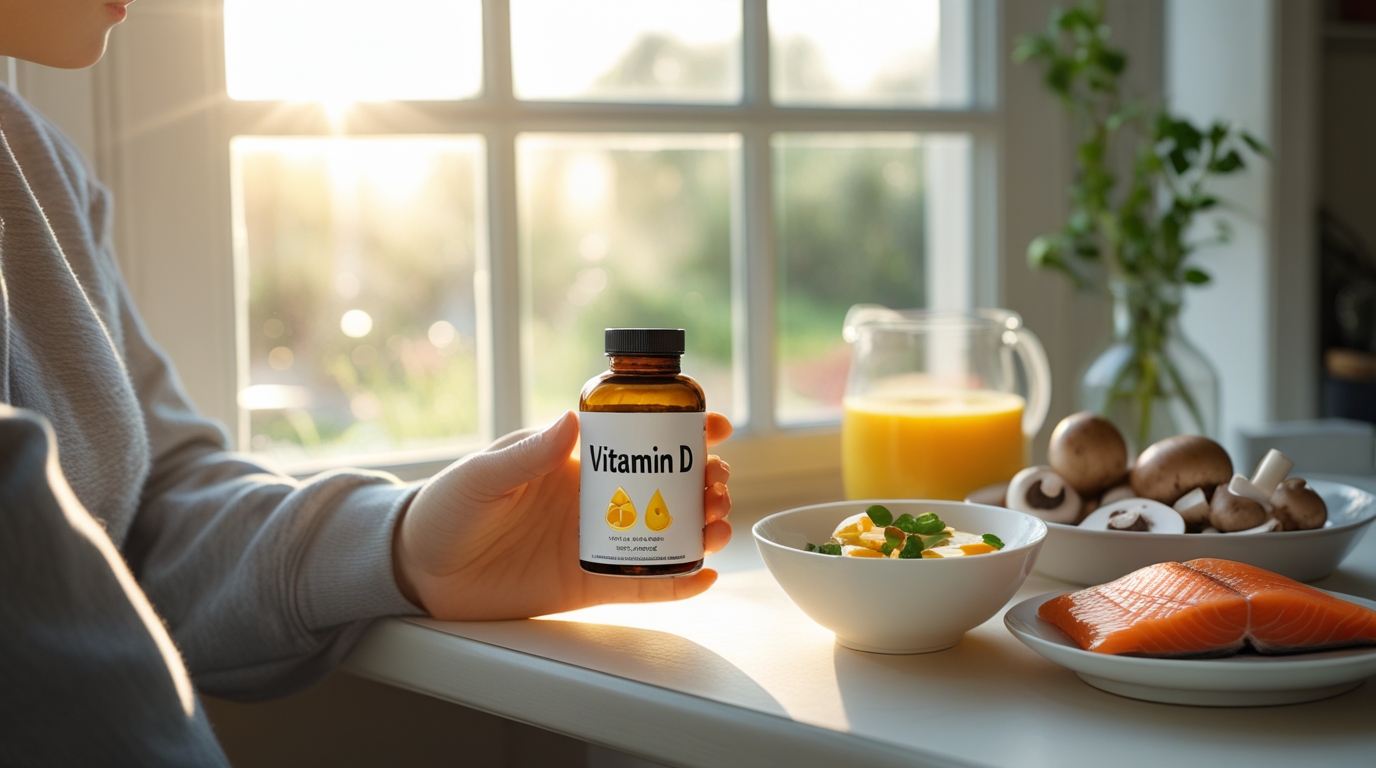Vitamin D vs. D3 in the United States is a key concern for many people aiming to improve their health and immunity. Vitamin D plays a vital role in supporting the immune system, strengthening bones, enhancing mood, and reducing inflammation. But when browsing supplements, you’ll often see two forms: Vitamin D and Vitamin D3. So, what’s the difference? And which one is right for you, especially if you live in the United States, where vitamin D deficiency is increasingly common?
In this guide, we’ll break down the key differences between vitamin D and D3, who should take them, how they work, and which form is considered more effective.
Disclaimer: This article is for informational purposes only. Always consult a healthcare professional before starting any supplement routine.
What Is Vitamin D vs. D3 in the United States?
A fat-soluble vitamin, vitamin D aids in the body’s absorption of calcium and phosphorus, two essential minerals for strong, healthy bones. Additionally, it promotes brain function, mood stability, and immunological health.
There are two primary forms:
- Vitamin D2 (ergocalciferol): Found in some plant sources and fortified foods.
- Vitamin D3 (cholecalciferol): Found in animal-based foods and made naturally by your skin when exposed to sunlight.
What Is Vitamin D3 in the United States?
The most accessible and efficient form of vitamin D for increasing blood levels is vitamin D3. It is created when ultraviolet B (UVB) rays strike your skin and is also present in foods like liver, egg yolks, and fatty fish.
Many supplements now specifically provide D3 because it’s more easily absorbed and retained in the body than D2.
Why Americans Need to Understand the Difference
Vitamin D deficiency is widespread in the U.S. due to:
- Spending time indoors
- Using sunscreen (which blocks UVB rays)
- Living in northern states with limited sunlight during fall/winter
Check out: Signs of Low Vitamin D
Vitamin D2 vs. D3: Key Differences
| Feature | Vitamin D2 | Vitamin D3 |
| Source | Plants, fortified foods | Animal-based foods, sunlight |
| Effectiveness | Less potent | More effective |
| Duration in Body | Shorter | Longer |
| Supplements | Prescription-based | OTC available |
Conclusion: D3 is the superior choice for most Americans.
Who Should Consider D3 in the U.S.?
- People living in northern states like New York, Michigan, and Minnesota
- Indoor workers and students
- Older adults (65+)
- Breastfeeding women and infants
- Those with dark skin tones (less vitamin D synthesis)
Natural Sources of D3
- Sunlight (15-20 min/day on bare skin)
- Salmon, sardines, mackerel
- Egg yolks
- Fortified dairy products
Explore: Best Vitamin D Supplements in the U.S.
Supplement Recommendations
How Much to Take?
The recommended dosage varies by age and health condition. For most adults:
- A daily dose of 1,000–2,000 IU is recommended.
- Over 70 or those with a deficiency: May need more (consult your doctor).
Complete Guide: How Much Vitamin D Should You Take Daily?
Top Pick: Amazon Affiliate Product
NatureWise Vitamin D3 5,000 IU Softgels
High absorption, Gluten-free, supports bones, mood, and immunity
FAQs About Vitamin D vs. D3 in the United States
Q1: Can I take D2 and D3 together?
It’s not harmful, but D3 is more effective. Most supplements contain only D3.
Q2: Are vegan D3 options available?
Yes, some brands use lichen as a plant-based source of vitamin D3.
Q3: How long does it take to raise vitamin D levels?
It typically takes 2–3 months of daily use to raise vitamin D levels, depending on the severity of the deficiency.
Q4: Can too much D3 be dangerous?
Yes. Do not exceed 4,000 IU daily unless supervised by a doctor.
Who Should Avoid High Doses of D3?
- People with kidney disease
- Individuals with high calcium levels (hypercalcemia)
- Those on certain heart or blood pressure medications
- Always consult your doctor before starting high-dose vitamin D3.
Understanding Vitamin D Blood Tests
To determine your vitamin D levels, ask your doctor for a 25(OH)D blood test. Ideal levels are typically:
- 30–50 ng/mL: considered optimal
- Below 20 ng/mL: deficiency
This test is simple and may be covered by insurance.
Conclusion: Vitamin D vs. D3 in the United States – What’s Best for You?
If you’re in the United States, chances are you’re not getting enough vitamin D, especially during the winter months. While both D2 and D3 provide benefits, D3 is significantly more potent and has a longer-lasting impact on your health.
To protect your bones, boost your immunity, and support overall well-being, consider:
- Taking a reliable D3 supplement
- Getting regular (safe) sun exposure
- Eating more vitamin D-rich foods
- Monitoring your levels with a blood test
Staying informed about your vitamin D vs. D3 needs in the United States can make a big difference in your daily energy and long-term health.
Call to Action
Start improving your health today with a trusted D3 supplement.
Continue reading:



